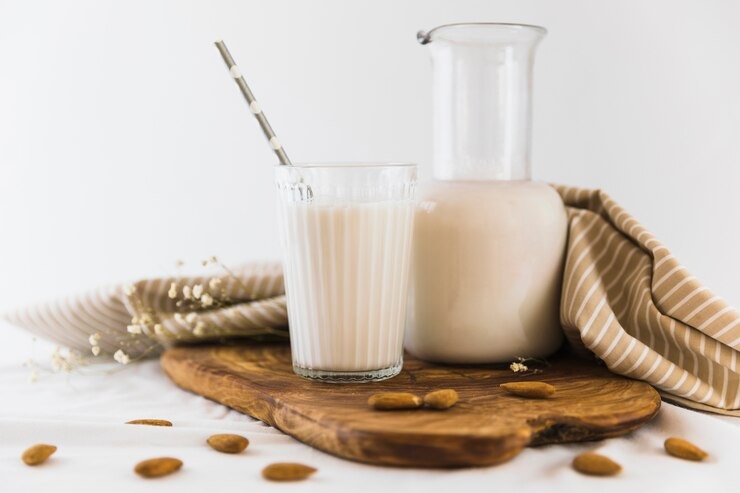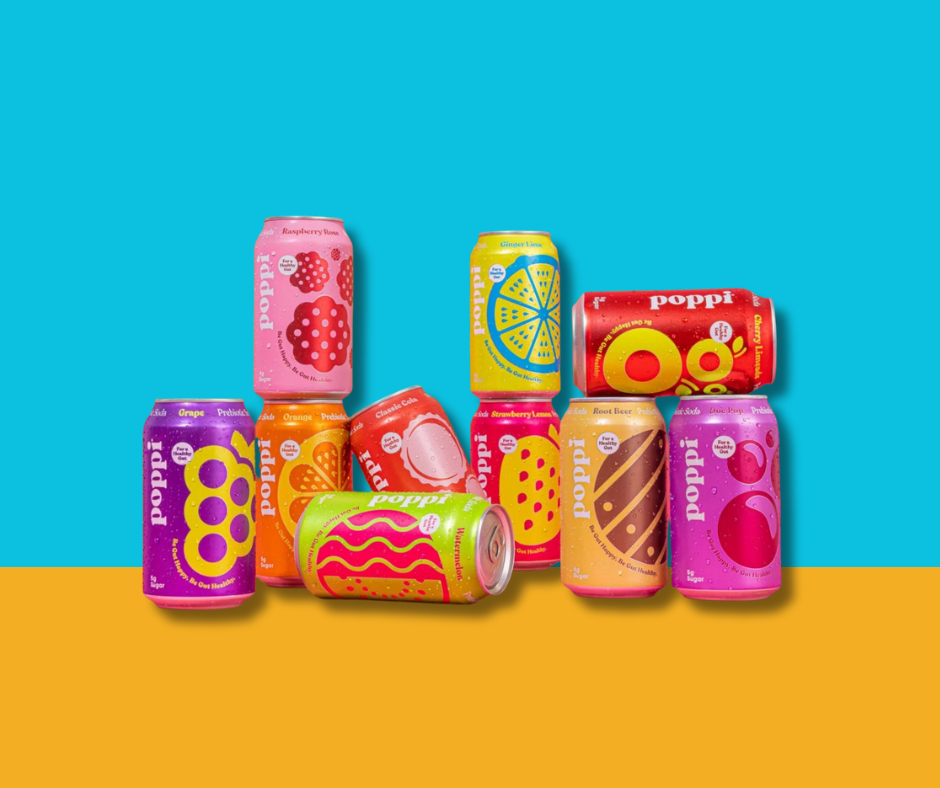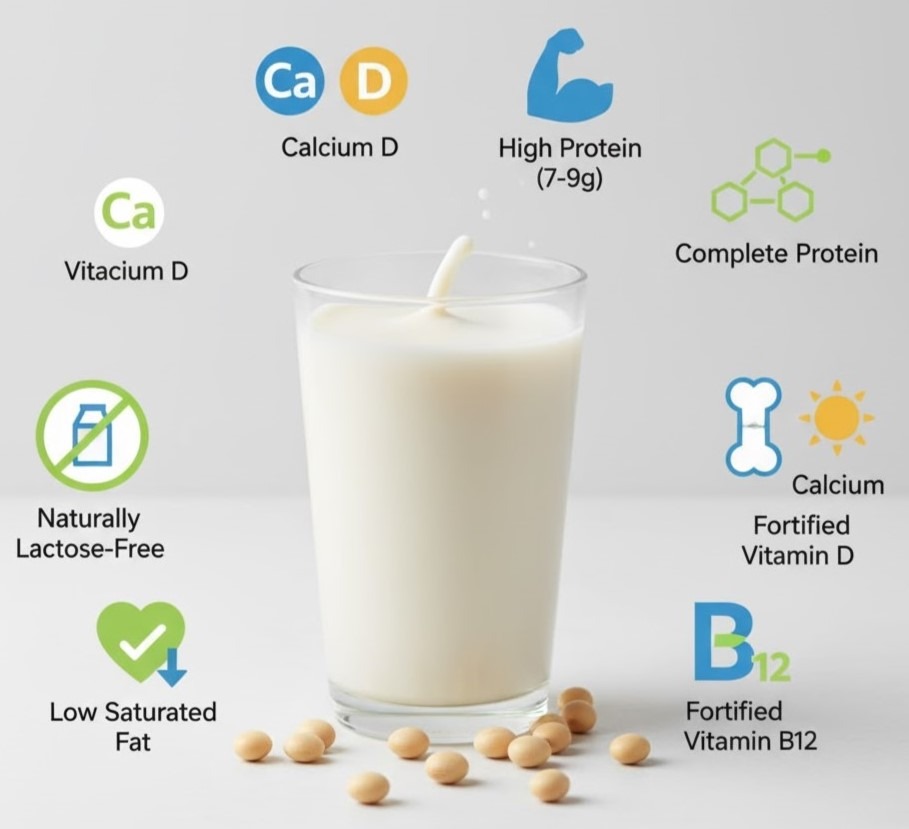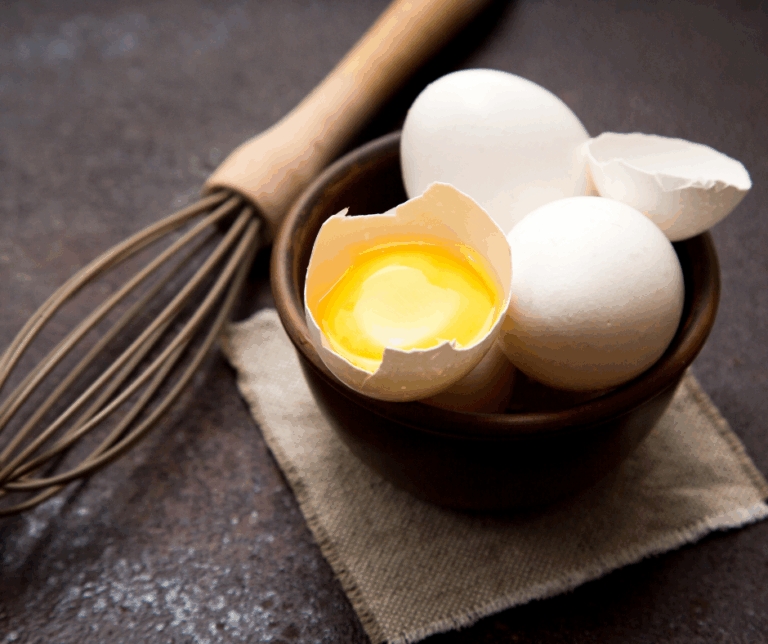The modern grocery store has transformed. Where the milk aisle was once a simple choice between skim, 2%, and whole, it’s now a dizzying spectrum of plant-based alternatives. Coconut, soy, rice, pea, hemp, oat, and the undisputed king of them all: almond milk.
Almond milk has surged in popularity, becoming a staple in households worldwide. Consumers choose it for many reasons—it’s vegan, it’s lactose-free, and it has a light, pleasant taste. But for a huge number of people, the primary motivation is written on the front of the carton in bold numbers: 30-40 calories per serving.
This single fact has triggered a massive health trend and a pressing, widely-searched question: Is almond milk good for weight loss?
It seems like a magic bullet. Can you really drink a creamy, milk-like beverage while shedding pounds? Does it help reduce stubborn belly fat? And does it matter when you drink it? Is it better for weight loss at night or in the morning?
The confusion is valid. With so many options, from “sweetened” to “barista blend,” it’s easy to make a choice that could, in fact, be sabotaging your weight loss goals.
This article is your complete, definitive guide. We will leave no question unanswered. We will dive deep into the science and practical application of almond milk, exploring:
- The direct link between almond milk and a calorie deficit.
- The truth about is almond milk good for losing belly fat?
- Is almond milk good for weight loss in the morning in your coffee, or at night before bed?
- What official sources like the NHS say about plant milks.
- The real-world consensus from Reddit communities.
- How almond milk compares to competitors like skim milk or oat milk for weight loss.
- Its role in weight loss smoothies.
- The specific benefits of almond milk for females and any potential side effects.
- The final verdict on what is the best milk for weight loss.
By the end of this guide, you will know exactly how to use almond milk as a powerful tool in your weight loss journey.
What Is Almond Milk? (Low-Calorie Dairy Alternative)
Before we can judge its role in weight loss, we need to understand what almond milk actually is. At its simplest, almond milk is a beverage made from ground almonds and filtered water. Commercial versions are then strained to remove the solid almond pulp, resulting in a smooth, milk-like liquid.
Because almonds themselves are nutrient-dense, you might assume almond milk is as well. However, because it’s mostly water, the final product is very light in calories and protein compared to whole almonds.
The single most important factor to understand is the difference between unsweetened and sweetened varieties.
Nutrition Overview
The nutritional gap between sweetened and unsweetened almond milk is not a small gap—it’s a chasm.
Here is a typical comparison for a 1-cup (240ml) serving:
| Nutrient | Unsweetened Almond Milk | Sweetened (Original) Almond Milk | Whole Dairy Milk |
| Calories | 30 – 40 kcal | 90 – 120 kcal | ~150 kcal |
| Fat | 2.5g | 2.5g | 8g |
| Protein | 1g | 1g | 8g |
| Carbs | 1 – 2g | 16 – 22g | 12g |
| Sugar | 0g | 15 – 21g | 12g (Lactose) |
| Calcium | ~45% DV (Fortified) | ~45% DV (Fortified) | ~25% DV |
This chart reveals the entire story. Unsweetened almond milk is a low-calorie, low-carb, zero-sugar beverage. Sweetened almond milk, on the other hand, is a high-sugar drink with triple the calories.
For the rest of this article, when we say almond milk is “good for weight loss,” we are referring exclusively to the UNSWEETENED version.
Why People Choose Almond Milk
- Lactose-Free: Millions of people are lactose intolerant. Dairy milk causes them significant digestive distress, including gas, bloating, and cramps. Almond milk is a naturally lactose-free alternative that provides digestive comfort.
- Low Calorie: As shown above, 30-40 calories is an incredibly low number for a creamy beverage. This makes it an easy swap for anyone tracking their calorie intake.
- Plant-Based / Vegan: For ethical, environmental, or dietary reasons, many people are moving away from animal products. Almond milk is a 100% plant-based, vegan-friendly product.
Almond Milk Price Overview
A common barrier for some is the almond milk price. It is, without question, more expensive than conventional dairy milk. This is due to the cost of almonds, the manufacturing process, shipping heavier water-based products, and branding.
- Store Brands: Most affordable. Supermarkets like Kroger, Walmart (Great Value), and Trader Joe’s offer their own brands that are often 20-30% cheaper.
- Mainstream Brands: (e.g., Silk, Almond Breeze). These are the mid-range, most common options.
- Organic/Premium Brands: (e.g., Califia Farms, Malk, Orgain). These often use organic almonds, have cleaner ingredient labels (no carrageenan or other emulsifiers), or are marketed as premium “barista blends.” These carry the highest price tag.
However, when factoring it into a weight loss plan, many find the extra cost is a worthwhile trade-off for the significant calorie savings.
Is Almond Milk Good for Weight Loss? (Short + Complete Answer)
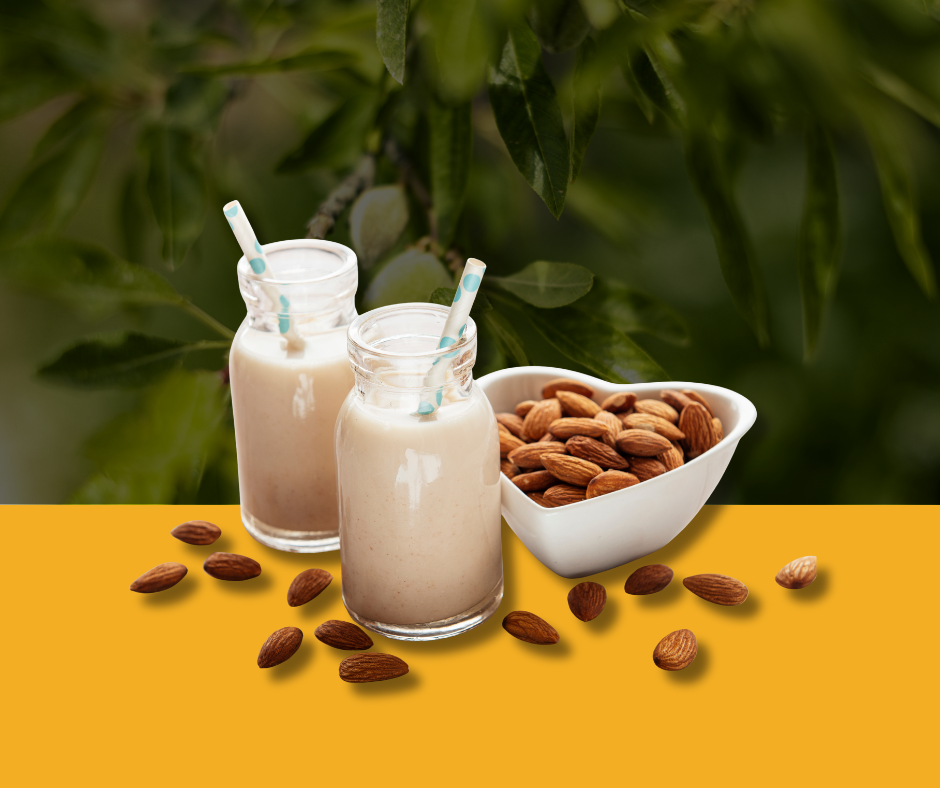
Let’s get straight to the point.
Quick Summary
Yes, unsweetened almond milk is an excellent beverage that can strongly support a weight loss journey.
It is not a magic “fat-burning” potion—no such thing exists. Its power lies in the simple, undeniable math of calorie management. It is a tool that makes it significantly easier to create and maintain a calorie deficit, which is the one and only non-negotiable requirement for losing weight.
A single cup of unsweetened almond milk contains only 30-40 calories. This is a fraction of the calories found in whole milk (150), 2% milk (120), oat milk (130), or even sweetened almond milk (90+).
This simple swap, especially if done daily, can save you hundreds, if not thousands, of calories per week without forcing you to make a painful sacrifice.
Why Almond Milk Helps With Weight Loss
This is the answer to the crucial question, “Why is almond milk good for your weight loss?” The benefits go beyond just the calorie count.
- It’s a Low-Calorie Swap: This is the most important factor. Weight loss hinges on consuming fewer calories than you burn. Let’s say you drink two glasses of 2% milk a day (240 calories). Switching to unsweetened almond milk (60 calories) saves you 180 calories every single day. Over a year, that’s a saving of 65,700 calories—which translates to nearly 19 pounds of fat.
- Extremely Low in Sugar and Carbs: Unsweetened almond milk has 0g of sugar and only 1-2g of carbohydrates. This is a massive benefit for weight loss. High sugar intake spikes your blood glucose, causing your body to release insulin, the “fat-storage” hormone. By keeping sugar intake minimal, almond milk helps maintain stable blood sugar levels, reduces cravings, and keeps your body in a fat-burning state for longer.
- Reduces Bloating (vs. Dairy): For many people, dairy milk causes bloating and inflammation. This isn’t “fat,” but it makes you feel heavier and less comfortable. Switching to almond milk can lead to an almost immediate “de-bloating” effect, making your stomach feel flatter and your clothes fit better.
- High in Vitamin E: Almonds are a fantastic source of Vitamin E, a powerful antioxidant. While not directly linked to weight loss, Vitamin E is crucial for skin health and reducing inflammation, supporting your body’s overall health as you lose weight.
- Suitable for Low-Carb and Keto Diets: Because of its near-zero carb and sugar content, unsweetened almond milk is a staple for people on low-carb or ketogenic diets, which are very effective fat-loss protocols.
Is Almond Milk Good for Losing Belly Fat?
This is one of the most specific and hopeful questions people ask. We all want to target that stubborn fat around our midsection.
Belly Fat Reality Check
First, we must be perfectly clear: No food or drink can “spot reduce” or “burn” belly fat. It is biologically impossible to tell your body to lose fat from only one specific area. You cannot drink almond milk and have it magically “melt” fat from your stomach.
Anyone who tells you a food “burns belly fat” is trying to sell you something.
How Almond Milk Can Support Fat Loss
So, is almond milk good for losing belly fat at all? Yes, indirectly, as part of a larger strategy.
Here’s how:
- It Helps You Lose Overall Fat: When you are in a consistent calorie deficit (which almond milk helps you achieve), your body will burn its stored fat for energy. It will take this fat from all over your body—your arms, your legs, your face, and yes, your belly. You can’t choose the order, but if you stay in a deficit, the belly fat will eventually be burned.
- It Reduces the “Belly Fat” Signal: Visceral fat (the dangerous fat deep in your abdomen) is highly correlated with high sugar consumption and insulin resistance. Your worst enemy in the fight against belly fat is sugary drinks—sodas, juices, energy drinks, and sweetened milks.
- By swapping any of these sugary drinks for zero-sugar unsweetened almond milk, you are directly attacking one of the primary drivers of abdominal fat storage. You’re lowering your insulin spikes and giving your body a chance to switch from storing fat to burning it.
So, while almond milk won’t “target” your belly, it is the best milk to lose belly fat because it helps you lose overall fat and removes the high-sugar ingredients that contribute to building belly fat in the first place.
Best Time to Drink Almond Milk for Weight Loss
The timing of your nutrition can optimize your results. So, when is the best time to incorporate almond milk into your day?
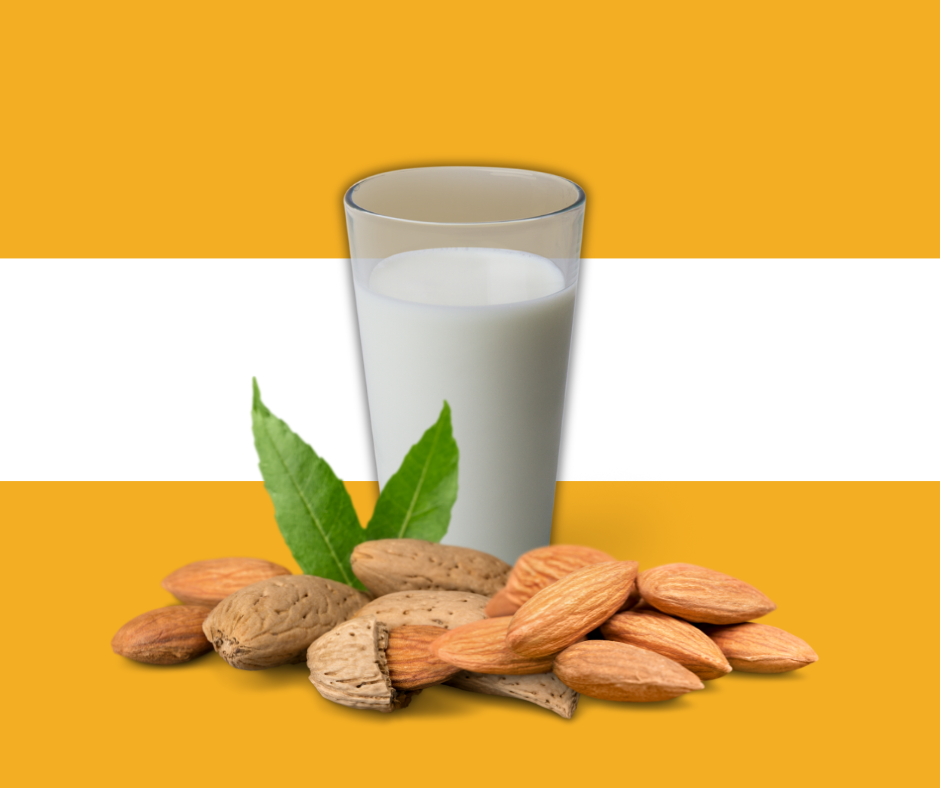
Is Almond Milk Good for Weight Loss in the Morning?
Yes, the morning is one of the best times to use almond milk for weight loss.
This is because the morning sets the tone for your entire day. Starting with a low-calorie, low-sugar breakfast makes it far easier to stick to your goals.
- In Your Coffee or Tea: This is the easiest win. A typical “coffee with cream and sugar” can be 100-150+ calories. A large latte with 2% milk can be 180+ calories. A large latte with unsweetened almond milk? Around 50-60 calories. You still get your comforting, creamy coffee ritual, but you’ve just saved 100+ calories before 9 AM.
- In Your Cereal or Oatmeal: Using 1 cup of unsweetened almond milk (30-40 calories) instead of 2% milk (120 calories) saves 90 calories instantly, without any noticeable sacrifice in taste.
- In Your Morning Smoothie: As a smoothie base, it’s unbeatable for weight loss. We’ll cover this in more detail below.
Starting your day with these simple swaps puts you in a “calorie-deficit” mindset and makes a real, mathematical impact on your daily total.
Is Almond Milk Good for Weight Loss at Night?
Yes, almond milk is also an excellent choice for a nighttime beverage.
Many people struggle with late-night cravings or the habit of having a snack before bed. This is often where diets are broken.
- Low Calories Before Bed: A cup of unsweetened almond milk is only 30-40 calories. It’s light, hydrating, and won’t “sit heavy” or contribute to weight gain like a high-calorie, high-sugar glass of regular milk or a bowl of ice cream.
- Easy to Digest: Because it’s lactose-free, it’s very gentle on the stomach and unlikely to cause the acid reflux or indigestion that high-fat dairy can.
- Helps Avoid Late-Night Snacking: A warm cup of unsweetened almond milk, perhaps with a dash of cinnamon, can be a comforting, psychologically satisfying ritual. It can signal to your brain that the “kitchen is closed” and help you overcome the urge to snack on high-calorie foods like cookies or chips.
Drinking Almond Milk Daily
This leads to another common question: Is it okay to drink almond milk every day for weight loss?
Yes, it is perfectly okay for most people to drink unsweetened almond milk every day.
Its low-calorie and low-sugar profile makes it a sustainable, healthy habit. The key is to ensure you are drinking a fortified brand. Because almond milk is not naturally high in calcium or Vitamin D (like dairy milk is), you must choose a brand that “fortifies” or adds these crucial nutrients.
Relying on a non-fortified version every day could lead to nutrient deficiencies. But a fortified, unsweetened version is a fantastic, healthy daily staple.
Almond Milk for Smoothies & Diets
One of almond milk’s most popular uses is in meal-replacement or post-workout shakes.
Is Almond Milk Good for Weight Loss Smoothies?
It is arguably the best liquid base for a weight loss smoothie.
The purpose of a smoothie is to pack a high volume of nutrients (protein, fiber, vitamins) into a low-calorie, filling meal. The liquid base you choose can make or break this equation.
- If you use Oat Milk (~130 cal), you’re adding unnecessary calories and sugar.
- If you use Dairy Milk (~120-150 cal), you’re adding calories and lactose.
- If you use Fruit Juice (~120 cal), you’re adding a massive sugar bomb.
- If you use Unsweetened Almond Milk (~30 cal), you are adding a creamy texture for almost zero caloric cost.
This allows the “budget” for your smoothie’s calories to be spent on things that actually help you:
- A scoop of Protein Powder (for muscle and satiety)
- A handful of Spinach (for vitamins)
- A tablespoon of Chia Seeds (for fiber and healthy fats)
- A half-cup of Berries (for antioxidants)
Almond milk is the perfect “vehicle” that carries the important nutrients without adding to the calorie load.
Best Almond Milk Smoothie Recipe Ideas
- The “Green Machine” (Weight Loss & Energy):
- 1 cup Unsweetened Almond Milk (30 cal)
- 1 scoop Vanilla Protein Powder (~110 cal)
- 1 large handful of fresh spinach (~10 cal)
- 1/2 frozen banana (~50 cal)
- 1 tbsp chia seeds (~60 cal)
- Total: ~260 calories. A filling, high-protein meal.
- The “PB Cup” (Satiety & Cravings):
- 1 cup Unsweetened Chocolate Almond Milk (40-50 cal)
- 1 scoop Chocolate Protein Powder (~120 cal)
- 1 tbsp Peanut Butter Powder (~30 cal) or regular PB (~90 cal)
- 1/2 frozen banana (~50 cal)
- Total: ~250-310 calories. Tastes like a dessert, functions as a meal.
- The “Berry Antioxidant” (Low-Calorie & Refreshing):
- 1 cup Unsweetened Almond Milk (30 cal)
- 1 cup frozen mixed berries (~70 cal)
- 1/2 scoop Vanilla Protein Powder (~60 cal)
- Total: ~160 calories. A perfect light breakfast or snack.
Almond Milk vs Other Milks for Weight Loss
How does almond milk really stack up against the competition?
Almond Milk or Skim Milk for Weight Loss?
This is the classic battle: the old-school “diet” milk vs. the new-school one.
| Feature | Unsweetened Almond Milk | Skim Milk |
| Calories | ~30-40 | ~80-90 |
| Protein | ~1g | ~8-9g |
| Sugar | 0g | ~12g (Lactose) |
| Satiety | Low | High |
The Verdict: It depends on your goal.
- Choose Unsweetened Almond Milk if your only goal is to cut calories. It’s the clear winner for the lowest calorie count, making it ideal as a low-impact additive to coffee, cereal, and smoothies where you’re getting protein from other sources.
- Choose Skim Milk if your goal is satiety (feeling full). The 8-9 grams of high-quality casein and whey protein in skim milk are far more filling than almond milk. Drinking a glass of skim milk is more like a “snack,” while drinking almond milk is more like “beverage.”
For many, the best choice is unsweetened soy milk, which bridges the gap: it’s plant-based, low-cal (~80), and has high protein (~7-8g).
Is Oat Milk Good for Weight Loss?
To be blunt: No, oat milk is generally a poor choice for weight loss.
It has become incredibly popular in coffee shops because it’s thick, creamy, and steams well. But from a nutritional standpoint, it’s a calorie and carb bomb.
- Oat Milk (Original/Barista): ~120-140 calories, 5-7g fat, 16-20g carbs.
- Unsweetened Almond Milk: ~30-40 calories, 2.5g fat, 1-2g carbs.
Oat milk has 4x the calories and 10x the carbs. If you’re serious about weight loss, oat milk should be considered a “treat” in your latte, not a daily staple.
Best Milk to Drink for Weight Loss (Ranking List)
Here is a clear ranking of the best milks for a weight-loss diet, from best to worst.
- Unsweetened Almond Milk: The undisputed champion of low-calorie options.
- Unsweetened Cashew Milk: Very similar to almond milk, extremely low-calorie.
- Unsweetened Flax Milk: Another ultra-low-calorie option, with the added benefit of Omega-3s.
- Unsweetened Soy Milk: The “all-star.” Low-calorie (~80) and high-protein (~7g). A perfect balance.
- Skim Milk: A great high-protein, high-satiety option, but with more calories and sugar (lactose) than the top plant-milks.
- Oat Milk: (Far down the list). High-calorie, high-carb. Not a diet-friendly choice.
- Rice Milk: Very high in carbs and sugar, with almost no nutritional value. Avoid.
- Anything “Sweetened”: The absolute worst choice. These are just sugar-water and will sabotage any weight loss effort.
Best Milk to Lose Belly Fat
As we covered, no milk targets belly fat. The best milk to lose belly fat is the one that best helps you lose overall fat.
This means the winner is the milk with the lowest combination of calories and sugar.
Winner: Unsweetened Almond Milk. Its 30-40 calorie, 0-sugar profile makes it the most “belly-fat-friendly” milk on the market, as it does the least to spike blood sugar or add to your calorie surplus.
Best Alternative Milk for Weight Loss
If we’re only looking at the non-dairy, plant-based alternatives, the ranking is clear.
- Unsweetened Almond Milk (Lowest Calorie)
- Unsweetened Cashew Milk (Lowest Calorie)
- Unsweetened Soy Milk (Best Protein-to-Calorie Ratio)
Benefits of Almond Milk (General + Female-Specific)
Beyond weight loss, almond milk carries several other health benefits.
Almond Milk Benefits
- Low Calorie: Its number one benefit for weight management.
- Rich in Vitamin E: A single cup can provide up to 50% of your daily Vitamin E, a powerful antioxidant that fights inflammation and supports skin and eye health.
- Heart-Healthy: It has zero cholesterol and is low in saturated fat. Replacing high-fat dairy with almond milk can be a good move for cardiovascular health.
- Lactose-Free: An excellent choice for those with lactose intolerance, reducing digestive gas and bloating.
- Fortified with Nutrients: Most commercial brands are fortified to be a 1-to-1 replacement for dairy milk, containing high levels of Calcium and Vitamin D.
Benefits of Almond Milk for Females
The benefits of almond milk for females are particularly noteworthy.
- Bone Health Support: Women are at a significantly higher risk of developing osteoporosis as they age. The fortified Calcium and Vitamin D in almond milk are absolutely critical for maintaining bone density and health.
- Weight Management: The low-calorie and low-sugar nature of unsweetened almond milk makes it a powerful tool for females managing their weight, whether for general health, PCOS, or post-partum.
- Skin Health: The high antioxidant content of Vitamin E is famous for its “skin-food” properties, helping to protect skin cells from damage and maintain a healthy glow.
- Hormonal Acne (Anecdotal): While not scientifically proven, many women report a significant reduction in hormonal acne after cutting out dairy. Using almond milk as an alternative allows them to enjoy their favorite foods without this potential hormonal trigger.
Almond Milk Benefits and Side Effects
No food is perfect for everyone. It’s important to have a balanced view.
Almond Milk Benefits
To recap, the primary almond milk benefits are:
- Excellent for calorie-controlled diets (weight loss).
- A key source of Vitamin E.
- A bone-healthy choice if fortified with Calcium & Vitamin D.
- A digestive-friendly, lactose-free, and vegan option.
Almond Milk Side Effects in Females
While generally very safe, there are some potential almond milk side effects in females and others to be aware of.
- Nut Allergy: This is the most obvious and immediate danger. If you have a tree nut allergy, you must avoid almond milk completely.
- Lack of Protein: This is the biggest nutritional side effect. A female who swaps dairy milk (8g protein) for almond milk (1g protein) and doesn’t replace that lost protein (from sources like chicken, eggs, tofu, or protein powder) may struggle to feel full and could lose muscle mass. This is detrimental to a healthy metabolism.
- Sweetened Version = Weight GAIN: The biggest “side effect” is choosing the wrong kind. Sweetened almond milk is packed with sugar (often more than a donut) and will actively cause weight gain, not prevent it. You must read the label and ensure it says “Unsweetened.”
- Thyroid Considerations (Goitrogens): This is a minor concern often blown out of proportion. Almonds are a “goitrogenic” food, meaning they contain compounds that in very large quantities could potentially interfere with iodine uptake in the thyroid. The amount in a glass or two of almond milk is considered negligible and not a risk for people with normal thyroid function. If you have a pre-existing thyroid condition, it’s always wise to speak with your doctor.
- Additives & Thickeners: To make almond milk creamy, many brands use emulsifiers and thickeners like carrageenan, gellan gum, or lecithin. A small percentage of the population finds these additives can cause digestive distress or bloating. If you experience this, look for a “clean” brand with just almonds, water, and salt.
Almond Milk & Official Guidelines (NHS + Reddit)
What do official health bodies and real-world users have to say?
Is Almond Milk Good for Weight Loss NHS?
The NHS (National Health Service) in the UK provides guidance that indirectly supports using unsweetened almond milk for weight loss.
The official “Eatwell Guide” from the NHS includes a “Dairy and alternatives” section. It states that when choosing these products, you should “choose lower-fat and lower-sugar options.”
- Unsweetened almond milk is both low-fat and low-sugar (0g).
- The NHS also explicitly lists “soya drinks and yoghurts” as dairy alternatives and recommends calcium-fortified versions.
Therefore, choosing an unsweetened, calcium-fortified almond milk aligns perfectly with official NHS healthy eating guidelines for anyone, including those trying to manage their weight. It’s a textbook “healthy choice” according to their own criteria.
Is Almond Milk Good for Weight Loss Reddit?
If you search “is almond milk good for weight loss” on Reddit, you will find an overwhelming “YES” from communities like r/loseit, r/1200isplenty, and r/keto.
The sentiment on Reddit is:
- It’s a “Holy Grail” Product: Users call it a “life-saver” and a “cheat code” for weight loss.
- The Unsweetened Rule: The community is very strict about the “unsweetened” rule. They will quickly correct any new user who buys the “original” (sweetened) version, warning them of the hidden sugar.
- Common Uses: Redditors share “hacks” for using it to make low-calorie lattes, creamy oatmeal, low-calorie “ice cream” with protein powder, and as a base for high-protein, low-cal smoothies.
The real-world consensus from millions of users on Reddit is that unsweetened almond milk is a trusted, effective, and indispensable tool for losing weight.
FAQ Section (400–500 words)
1. Can almond milk help with weight loss? Yes. Unsweetened almond milk is very low in calories (30-40 per cup). By using it to replace higher-calorie drinks like dairy milk, oat milk, or soda, you can easily create a calorie deficit, which leads to weight loss.
2. What’s the best almond milk brand for dieting? The best brand is any brand that is labeled “Unsweetened” and contains 30-40 calories per cup. Ideally, it should also be “Fortified” with Calcium and Vitamin D. Brand names are less important than the nutrition label.
3. Does almond milk cause bloating? For most people, it reduces bloating because it’s lactose-free. However, a small number of people may be sensitive to additives like carrageenan or gellan gum, which can cause digestive upset. If this happens, try a brand with minimal ingredients (just almonds, water, salt).
4. Does almond milk help flatten your stomach? No food can “flatten” your stomach or “spot-reduce” fat. However, unsweetened almond milk helps you lose overall body fat by helping you stay in a calorie deficit. It also helps reduce the digestive bloating that dairy milk causes in many people, which can make your stomach feel and look flatter.
5. Is it okay to drink almond milk every day? Yes, it is safe for most people to drink unsweetened, fortified almond milk every day. The only exceptions would be people with a tree nut allergy or those who need a high-protein milk and aren’t getting protein elsewhere.
6. What milk should I drink to lose weight fast? The “fastest” weight loss comes from the biggest calorie deficit. The milk that is lowest in calories is unsweetened almond milk (30-40 calories).
7. Which is healthier: almond milk or oat milk? For weight loss, almond milk is far healthier due to its low-calorie, low-sugar, and low-carb profile. Oat milk is much higher in all three and is not a diet-friendly choice.
8. Is almond milk good before bed? Yes, a warm cup of unsweetened almond milk is a great low-calorie, comforting, and easy-to-digest drink to have before bed. It can help prevent late-night snacking.
9. Can almond milk replace dairy? Nutritionally, it can only replace dairy if it is fortified with calcium and Vitamin D. However, it cannot replace the protein in dairy. You must add other protein sources to your diet.
10. Which almond milk is best: sweetened vs unsweetened? For weight loss and general health, unsweetened is the only choice. Sweetened almond milk is a sugary drink, similar to soda, and will contribute to weight gain.
Final Verdict — Should You Drink Almond Milk for Weight Loss?
So, is almond milk good for weight loss?
The answer is a qualified, resounding YES.
The qualification is simple and non-negotiable: it must be unsweetened.
Unsweetened almond milk is not a magic potion, but it is one of the most powerful, simple, and effective tools you can add to your weight loss arsenal. Its power lies in its incredibly low-calorie count, which allows you to enjoy a creamy, satisfying beverage without sabotaging your calorie deficit.
Summary
- For Weight Loss: Unsweetened almond milk is an A+ choice. At only 30-40 calories, it’s a simple swap that can save you hundreds of calories per week.
- For Belly Fat: It helps you lose overall fat by helping you stay in a calorie deficit. It also removes the high sugar that contributes to abdominal fat storage, making it the best milk to lose belly fat.
- When to Drink: It’s perfect in the morning to start your day with a low-calorie coffee or smoothie, and great at night as a light, comforting drink to prevent snacking.
- Comparisons: It is significantly better for weight loss than oat milk and lower in calories than skim milk, though it lacks protein.
- For Females: The specific benefits of almond milk for females—namely, bone support from fortified calcium and skin health from Vitamin E—make it a smart and healthy choice.
The final verdict is clear: Read the label. If it says “Unsweetened” and “Fortified,” you’ve found a powerful ally. It’s the “permission slip” to still enjoy your lattes, smoothies, and cereals while successfully and sustainably losing weight.
Certainly! Here is a list of authoritative hyperlinks you can use as references for the key points in the article:
References
Here are the official sources and health guidelines that support the information on almond milk’s nutritional content and its role in a healthy diet.
- NHS (National Health Service) – The Eatwell Guide
- USDA FoodData Central – Unsweetened Almond Milk
- USDA FoodData Central – Skim Milk
- USDA FoodData Central – Oat Milk
- NIH (National Institutes of Health) – Vitamin E Fact Sheet
- NIH (National Institutes of Health) – Bone Health for Life
- Harvard Health Publishing – “Should I be concerned about goitrogens in my food?”.
- Reddit: r/loseit – Search Results for “Almond Milk”

